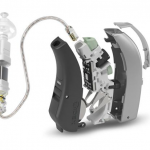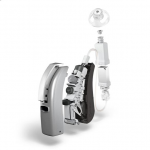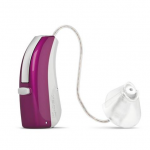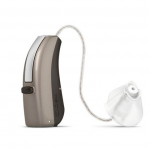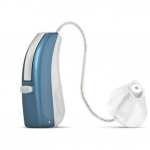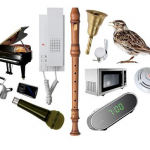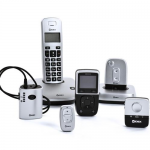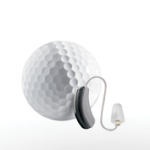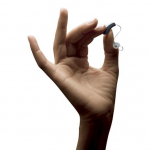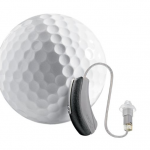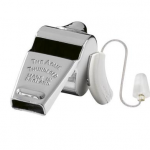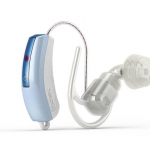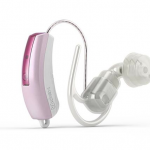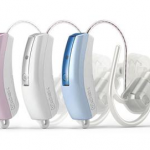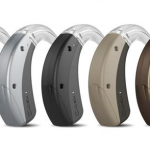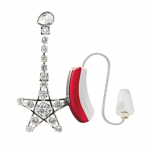About Hearing
Information on Hearing Loss
Types of hearing Loss and Causes
There are 3 basic types of hearing loss - Conductive, Sensorineural and Mixed.
A CONDUCTIVE LOSS results from a disturbance in the movement of the sound through the ear.
These causes include:
- Excessive or obstructive earwax,
- Foreign bodies in the ear canal,
- Excessive narrowing of the ear,
- Outer ear infections e.g. swimmers ear,
- Perforated eardrums due to trauma or middle ear infections,
- Middle ear infections,
- Dislocation of the Ossicular chain in the middle ear,
- Otosclerosis- stiffening of the Ossicular chain
A SENSORINEURAL LOSS results from damage to the nerve hair cells in the inner ear responsible for sensing sound waves.
These causes include:
- Aging
- Prolonged exposure to extreme noise or sudden intense noise e.g. gunshot
- Vascular diseases e.g. diabetes
- Trauma to the skull or ear e.g. fracture
- Ototoxic medications e.g. some forms of chemotherapy, large doses of diuretics
- Viral infections e.g. mumps, measles, meningitis
- Tumors e.g. acoustic neuroma
- Meniers disease – can affect balance and hearing.
A MIXED LOSS results from a combination of conductive and sensorineural causes.
Management & Treatment of Hearing Loss
Conductive Losses
Most conductive hearing losses are temporary and can be corrected. This may include manual removal of foreign objects, the use of ear drops or warm olive oil to manage earwax production and the use of medication e.g. antibiotics for middle ear infections. Surgery performed by an Ear, Nose and Throat Specialists can also manage perforated eardrums, otosclerosis, and fluid build-up in the middle ear, to name a few.
Sensorineural Losses
Some sensorineural losses caused by factors like tumors can be surgically corrected however most of these losses are permanent and irreversible. Hearing aids and cochlear implants offer amplification strategies to these individuals.
Amplification Strategies
WHAT HEARING AIDS CAN DO FOR YOU!
Ten years ago the possibility of wearing a hearing aid was met with despair and trepidation. Those big, ugly, beige, devices that squealed endlessly were to be avoided at all costs. Yes we put off wearing one till the last minute! It was a time when hearing aids just didn’t produce the results, wearers were looking for- cosmetic appeal, less fuss and handling, use when on the telephone, and effective amplification when in groups and background noise
Those were ANALOG hearing aids, similar to loudspeakers and simple microphones. They mainly functioned as amplifiers without much ability to reduce background noise.
Now DIGITAL technology is the way to go! Smaller , computer-like, programmable hearing aids offer greater flexibility and have wider application in diverse listening environments like meetings, parties, and religious gatherings. No more endless whistling or squealing from the hearing aids and no more adjusting knobs and wheels. Let your hearing aids adjust automatically for you.
WIRELESS CONNECTIVITY allows your cell phone, landline and TV send information to your hearing aids without a mess of cords . Imagine driving in your car or rushing off to a meeting, hearing your cell phone ring directly “in” your hearing aids and at the touch of a button being able to have a “hands-free” conversation , with sound being transmitted wirelessly to both your hearing aids!
Keep your hearing aids on when you hear the land line ring and at the touch of a button you could be up to 10m away and have a hands-free conversation on the land line and you didn’t even pick up the phone receiver! Watching the news or getting that sports score is a breeze, because your hearing aids receive sound directly from the TV, allowing you to be in control of the volume you would like to watch TV.
STYLES OF HEARING AIDS
Because hearing loss differs from one person to the next, hearing aids are selected for that individual’s hearing, listening needs and budget. This means that hearing aids come from a variety of manufacturers, in different styles, at different levels of functioning and at different costs.
- In The Ear (ITE) hearing aids
These are custom-made to fit your ear and house all the instrument’s components within the ear canal. They are easy to insert and usually are quite discreet. If you are prone to outer ear infections, build-up of debris in the canal or have lots of soft earwax, then these instruments may not be the best option for you.
- Behind The Ear (BTE) hearing aids
The hearing aid components of these aids are housed behind the ear and may be connected by a thin plastic tube to a custom-made earmould or to a dome /ear tip that delivers the sound into the ear. This style of aid has become very popular because they are discreet, can fit many types of hearing losses, have a more natural sound quality and are comfortable.
Open-fit hearing aids and Receiver –In-The-Ear aids offer effective comfort and aesthetic appeal. These can be fitted on a trial-basis , allowing the wearer to “test-drive” the instrument of choice.
Your hearing adds quality to life, whether it is in being able to appreciate the tinkle of the piano in your favourite music, being able to participate with confidence in the boardroom, enjoying the banter and laughter at your favourite social gathering, hearing the message delivered at your religious institution, or having that telephone conversation with your family overseas.
Hearing aids can connect you, empower you and renew your confidence.
Take that first step- Detect changes in your hearing and let your hearing care professional guide you through the process of making a difference in your life.
If you would like to find out more about Tanya Gabriel Audiology Services, please contact us!






